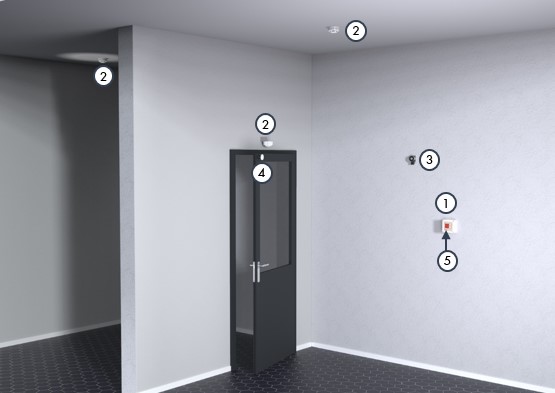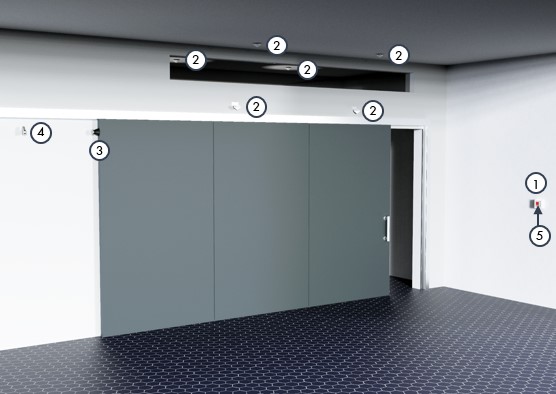Hold-open systems – General information
Fire and smoke can be extremely dangerous. If a fire breaks out in a building, it can spread rapidly if no appropriate precautions have been taken. A danger to people and, of course, to the building and everything inside it.
In case there’s a fire, fire barriers ensure that the fire cannot spread unhindered though the entire building. Therefore, doors in fire sections must be tested and approved for this purpose and must be self-closing in accordance with the regulations.
Problem: in many buildings, it is necessary to keep a fire / smoke protection closure temporarily open
Still far too often one can see that doors are held open by wedges or similar objects. BUT: Doors kept open this way not only allow people or goods to pass through, but also smoke or flames in the event of a fire. It must be therefore ensured that doors in fire compartments are kept open in such a way during normal operation but that, in the event of a fire, they always close immediately on their own.
Solution: Hold-open systems keep doors open during normal operation and, at the same time, ensure that they close automatically in case of a fire.
A hold-open system consists of the following components:
- Power supply and tripping device: The central control unit is the heart of the hold-open system. It ensures the 24 VDC power supply of the components and evaluates the fire detectors.
- Fire detectors: Smoke and/or heat detectors immediately report a fire to the central and thus ensure that the hold-open system is triggered safely. If necessary, separate regulations must be observed for the use of heat detectors.
The required number of fire detectors and their installation positions must be determined in accordance with the regulations in the respective country. - Electromagnet and …
- …corresponding counter plate: An electromagnet with the corresponding counter plate keeps the door open. In the event of an alarm or when a manual release button is pressed, the magnet releases the door for automatic closing.
- Manual release switch: A hold-open system must also be able to be released manually independently of the fire detectors, on the one hand, to check the function of the hold-open device and, on the other, to close the fire protection closure when the operating procedure no longer requires keeping the door open. A separate manual release button is fitted for this purpose. It is important that the push-button is always clearly visible and mounted directly next to the door.
The exact configuration of a hold-open system may vary from country to country. In Europe, the existing standard for hold-open systems is EN 14637. However, this standard has not yet been harmonized, so that national regulations, such as the requirements of the DIBT in Germany, can partially or completely replace or supplement them.




